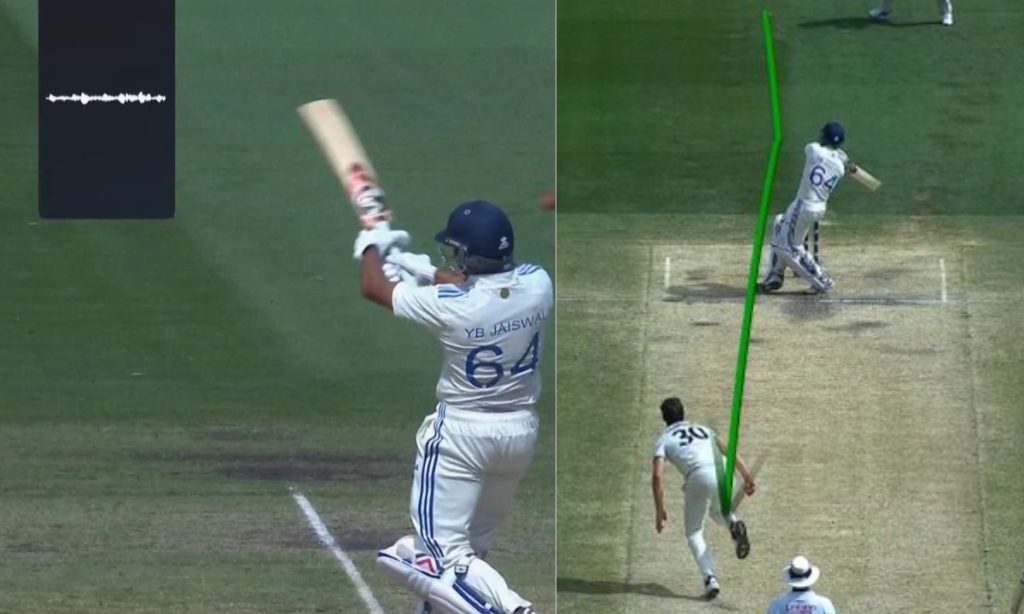In the high-stakes environment of Test cricket, every decision by the umpires can significantly sway the game’s outcome. On a tense Day 5 at the Melbourne Cricket Ground (MCG) in the 4th Test between India and Australia, a decision regarding Yashasvi Jaiswal’s dismissal sparked debate and left cricket enthusiasts questioning the reliability of the third umpire’s judgment.
The Incident
India, struggling at 142-7 and trailing behind in the match, found a glimmer of hope in Yashasvi Jaiswal, who had mustered 84 runs off 208 balls. His innings was crucial, especially with Washington Sundar at the other end, trying to salvage something from a difficult situation. The turning point came when Pat Cummins delivered a short-pitched ball. Jaiswal, attempting a hook shot, saw the ball fly past him, leading to a catch appeal by the Australian team. The on-field umpires sent it upstairs for a review, focusing on whether there was an edge off Jaiswal’s bat.
The Decision
The third umpire, tasked with making the final call, reviewed the available footage. Here’s where the controversy began. The snickometer, which typically shows a spike for any bat contact, displayed no such evidence. However, the umpire decided based on what appeared to be a deflection in the ball’s trajectory after it passed Jaiswal’s bat. Without checking the snickometer, which would have provided conclusive evidence of an edge, the decision was made to give Jaiswal out. This call left many, including seasoned commentators, baffled and frustrated.
Commentators’ Outcry
Commentators like Sunil Gavaskar, Jatin Sapru, and Irfan Pathan were vocal about their disbelief in the decision. They argued that the umpire should have relied on the snickometer for such a pivotal moment in the game. Gavaskar, known for his sharp analysis, emphasized that without any spike on the snickometer, the benefit of doubt should go to the batsman. Sapru and Pathan echoed this sentiment, pointing out that the deflection alone wasn’t conclusive enough to overturn the on-field decision, especially in the absence of any auditory or visual evidence of an edge.
The Role of Technology
This incident raises critical questions about the use of technology in cricket. The snickometer, real-time snicko (RTS), and ultra-edge are tools designed to provide clear, irrefutable evidence in such scenarios. The technology is meant to assist umpires in making decisions based on facts rather than assumptions based on visual cues alone. The fact that the third umpire chose not to use the snickometer, or at least did not give it due weight, in this instance, undermines the purpose of having these technologies in the first place.
Where is Evidence?
#YashasviJaiswal pic.twitter.com/eQOdF6vSZp
— Priyanshu Kushwaha (@PriyanshuVoice) December 30, 2024
The Impact on the Game
Jaiswal’s dismissal was not just a loss of a wicket; it was the end of a fighting knock in a match where India desperately needed runs. His innings of 84 was a lone battle, showcasing his resilience and skill against a formidable Australian bowling attack. With his dismissal, the last significant hope for a competitive total faded, potentially altering the match’s trajectory and series outcome.
The Broader Implications
This incident is a stark reminder of how crucial umpiring decisions can be in cricket, especially in a format as nuanced as Test cricket where every run counts. It also brings to light the ongoing debate about the consistency and reliability of umpiring, even with technology at hand. The expectation is that technology should lead to fewer errors, not more, by providing clear, indisputable evidence. When umpires bypass or misinterpret such technology, it affects the game’s integrity and fairness.
What Could Have Been Done Differently
The third umpire could have taken a more systematic approach:
Check all available technology: Before making any decision, all available tech should be reviewed. This includes snickometer, hot spot, and any other relevant visual or audio aids.
Give precedence to conclusive evidence: If there’s no clear evidence of an edge on the snickometer, the decision should lean towards not out unless other technologies provide definitive proof.
Communication with on-field umpires: There needs to be clearer communication, possibly involving the on-field umpires more directly in the decision-making process when technology gives ambiguous results.
The dismissal of Yashasvi Jaiswal at the MCG will be remembered not just for the skill he showed but for the controversy surrounding his exit from the crease. It serves as a case study on the use, or misuse, of technology in modern cricket. For fans, players, and officials alike, this incident should prompt a reevaluation of how decisions are made with the aid of technology to ensure that the game remains as fair as possible. Jaiswal’s innings might have ended on a controversial note, but his performance was a testament to his growing stature in international cricket, leaving fans hopeful for more from this young talent in future matches.

